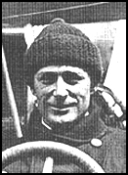

1912-1914 |
 |
 |
Photo Courtesy of Lakewood Sun Post |
Photo Courtesy of Lakewood Sun Post |
|
This article by Dan Chabek appeared in the Lakewood Sun Post February 17, 1994. Reprinted with permission. Albert J. Engel began flying in 1911 and during 1912, ‘13 and probably ‘14, kept his pontooned seaplane, the Bumble Bee, in the mouth of the Rocky River at Lakewood Yacht Club (now Cleveland Yachting Club). It wore the club’s burgee (swallow-tailed flag) affixed to its rudder. Today, the wondrous early aircraft is on display in the Frederick C. Crawford Auto-Aviation Museum at University Circle. Engel, considered a hell-bent daredevil among his contemporaries, acquired his seaplane in 1912 after crashing his first plane -- one similar to the Bumble Bee but with wheels -- a year earlier. The engine on his original plane quit and he had to make an emergency landing in a farmer’s field, explained David Holcombe of Westlake, who has been a staff member and chief factotum at the Crawford Museum since 1978. Coming down, he landed on a cow. Neither he nor the cow was seriously injured but the plane was totaled. So, Engel decided the better idea was to buy a seaplane for what he assumed would provide softer landings, according to Holcombe. The builder of both planes was the Curtiss Aeroplane Co. of Hammondsport, N.Y. (later to become Curtiss Wright). Engel had a part-time association with Glenn Curtiss from the earliest days. With the Bumble Bee, Engel barnstormed the countryside. Aside from using his Rocky River launch site, he flew offshore from Edgewater and Willow Beach parks, and from watery sites in the Akron and Ashtabula areas. Charles Tracy of Bay Village, longtime aviation editor of the former Cleveland Press, interviewed Engel in 1974 when the airman was 95. Tracy learned that the Bumble Bee received its moniker in a for-women-only naming contest at Chautauqua Lake, N.Y. The prize was a 10-minute flight. |
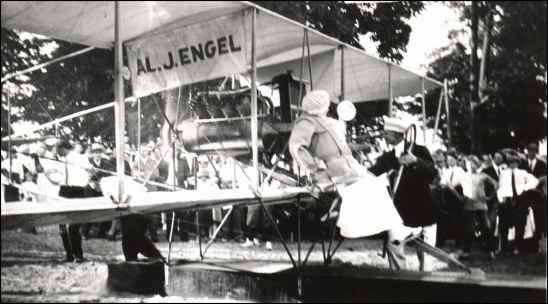 |
|
1910 Curtiss Model E Flying Boat |
| At Chautauqua and several towns nearby, Engel teamed with his Bumble Bee to pioneer mail service in the summer of 1914. He arranged with the local post master to air-deliver stamped postcards as part of a promotional program to advertise an amusement park in the vicinity. Later, the postmaster general at the nation’s capital took exception to Engel’s aerial mail effort. "I had to go to Washington to square myself," Engel told Tracy. "I said I thought I was helping him to get airmail started. He said he didn’t need any help and that it was illegal to carry stamped mail unless authorized by him." |
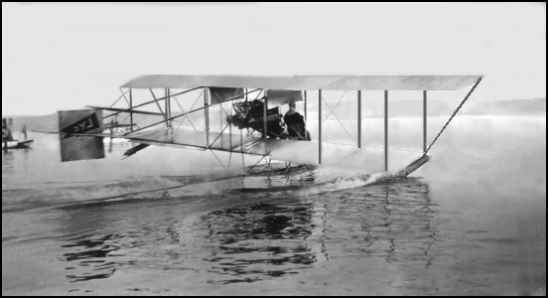 |
|
1910 Curtiss Model E Flying Boat Photo & text courtesy of Bud Carlson, 4-12-04 |
|
Engel retired the Bumble Bee before the end of 1914 and rejoined Curtiss full-time in Buffalo, teaching
Navy pilots to fly seaplanes. The aeronautical pathfinder was a lanky, blue-eyed 6-footer who was talkative, especially when the conversation had to do with airplanes. He liked speed and, when the urge to fly engulfed him in 1909, he already was racing motorboats and automobiles. An inventive, self-taught engineer, he devised numerous improvements for early aircraft, one of which was a seat belt.Tracy’s interview of 20 years ago was at Engel’s West Side Cleveland home (6624 Denison Ave.), where the distinguished flyer was born on May 12, 1879, and lived most of his life. Engel died in a nursing home in 1979, only four months before what would have been his 100th birthday. It was unusual to have a pioneer aviator live that long, Holcombe noted. Holcombe’s memorabilia file at the museum reveals that Engel always went by Al J., that he was married but had no children, and that his wife died in 1956. He was a Mason and belonged to numerous aviation organizations, including the Early Birds, for pilots who soloed before December 17, 1916, and the Quiet Birdmen, a fraternity of flyers founded in 1921. Engel was one of the oldest living veterans of the Spanish American War. Because he learned to speak Spanish at that time, he was chosen by Curtiss, about 15 years after the conflict, to train members of the Spanish Air Force how to fly Curtiss planes. Toward the end of World War 1, he opened the Engel Aircraft Factory in Niles, Ohio, to do contract work for the government, making components for war planes. In World War I, he manufactured gliders for the Army. Engel sold his rare Bumble Bee to the Crawford museum in 1946, where it was restored and now is the sole remaining genuine Curtiss hydroaeroplane. The aircraft is an open biplane with two side-by-side seats on a platform in front of the wings, where pilot and passenger are completely exposed to the elements. It is made of spruce, ash and fabric, and is driven by a water-cooled, 85-horsepower, V-8, pusher-type prop engine stationed behind the wings. Top speed is 70 mph and the original factory price was about $6,000. |
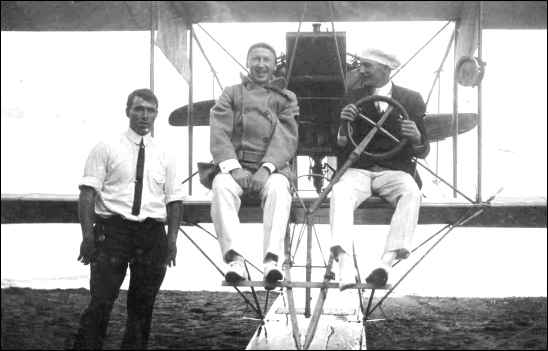 |
|
|
 |
|
taxiing in front of Chautuaqua, NY 1913. |
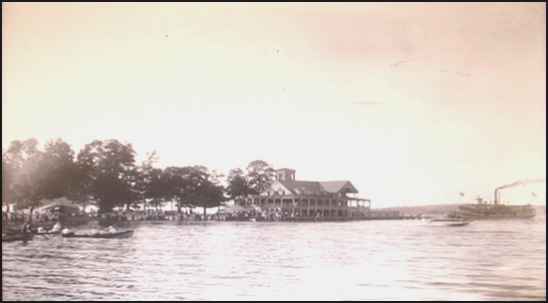 |
|
This picture shows Al. Engel in the "Bumble Bee" taxiing out in front of a steam boat coming in to the dock at the Chautauqua Institution, which is the official name for the cultural center located in the village of Chautauqua, NY. The famous Bell Tower landmark can just be seen to the left of the building. You can access the homepage of the Institution by clicking on the title. Photo & text courtesy of Bud Carlson, 4-12-04 |
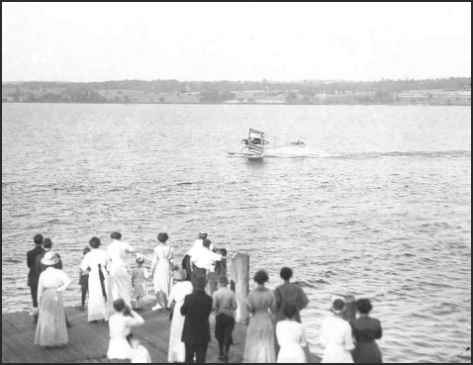 |
|
Photo courtesy from Bud Carlson, 4-28-04 |
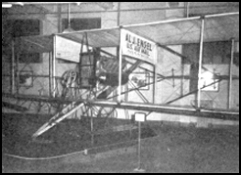 |
The Thompson Auto Album and Aviation Museum, 1959 Photo from EB CHIRP, No. 62 |
|
via email from Sally Osborne, 5-1-06 He and his wife, my mother's aunt Elizabeth (her father's sister) didn't have kids of their own, but they liked my mother and gave her a ring with sapphires in it when she was a girl. She gave the ring to me, and I'm about to give it to my daughter. My mother recently told me that her dad liked Al (his brother in law) but felt he was a little "sly". He must have been, to do all that he's done! When Al Engel decided to give his plane, the Bumblebee, to the Crawford Aviation Museum, he had a condition---that his nephew Cliff (my mother's brother) be hired by the museum to restore it. Cliff then became a museum employee for many years. Sally Osborne Daughter of Arlene (Schroeder) Swancer |


|